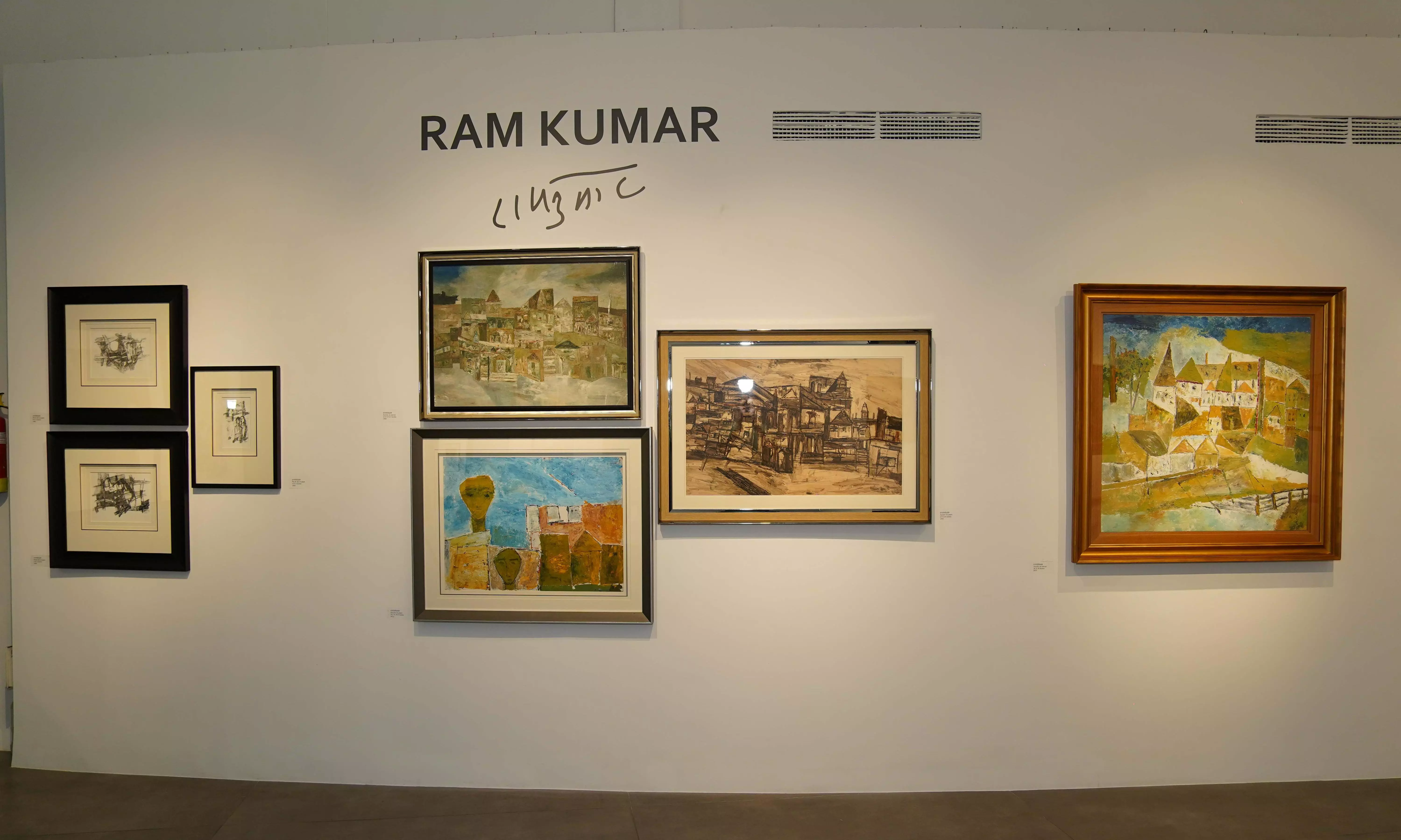Centennial retrospective exhibition in Delhi celebrates 100 years of four modern Indian masters
The four pioneering artists – each born in a different corner of the country –- played an instrumental role in shaping the trajectory of modern Indian art

New Delhi: What’s common about Francis Newton Souza, KG Subramanyan, Ram Kumar, and V.S. Gaitonde, apart from their long-standing reputation as four of India’s greatest modern artists? The answer: They were all born in 1924. And now, an extraordinary exhibition commemorating 100 years since the birth of these modern masters has opened at Triveni Kala Sangam, New Delhi. Titled “The Four: Celebrating the Birth Centenary of Four Modern Indian Masters”, the vast retrospective provides a rare opportunity to engage with iconic works by Souza, Subrahmanyan, Kumar, and Gaitonde, who, though distinct in style and vision, collectively articulated a narrative of modernity deeply rooted in Indian culture and society.
It is organised by the Progressive Art Gallery, in collaboration with the Raza Foundation. The show is curated by eminent art historian and critic Yashodhara Dalmia and was inaugurated by H.E. Dr. Philipp Ackermann, Ambassador of Germany to India on October 29, 2024. It is on public view till November 10, 2024.
As India strove to find the meaning of its new independent existence, the art of these masters reflected newfound curiosities and explorations — each coming from a different legacy.
While inaugurating the exhibition, H.E. Dr. Philipp Ackermann, Ambassador of Germany to India, said, “It is an honor to inaugurate this exhibition that celebrates the works of four exceptional artists who defined Indian modernity in art. F. N. Souza, K. G. Subramanyan, Ram Kumar, and V. S. Gaitonde represent a dynamic force in modern Indian painting, capturing the essence of an independent nation and its cultural awakening. Their vibrant, distinctly Indian styles convey both individuality and a collective spirit of India’s unique journey in modern art. I extend my sincere gratitude to The Raza Foundation for conceptualizing this meaningful exhibition, to Progressive Art Gallery for their dedicated works, and to Yashodhara Dalmia for her insightful curation. This exhibition not only honors these artists but also celebrates the strength and originality of Indian art over the past century.”
H.E. Dr. Philipp Ackermann, Ambassador of Germany to India
Speaking about the cultural legacy of the four artists, Harsh Vardhan Singh, Director & CEO of Progressive Art Gallery, said, “Each of these extraordinary artists has played a pivotal role in shaping modern Indian art. This exhibition is not merely a retrospective; it is a vibrant exploration of the themes, techniques, and philosophies that define the works of Gaitonde, Souza, Kumar, and Subramanyan. "Creating the Century" aims to spark a dialogue not only about the individual contributions of these artists but also about the broader context of Indian art in the 20th century. Their legacies serve as a lens through which we can explore themes of identity, memory, and transformation, resonating with the challenges and aspirations of contemporary society.”
Ashok Vajpeyi, Managing Trustee of The Raza Foundation, said: “It is a happy coincidence that many masters of modern Indian art were born in 1924 and we are celebrating their birth centenary. It was the time when both the national movement for freedom and a wide-ranging and complex struggle for modern art were entering a critical phase. The four artists were born in almost four corners of the country. In a way, these artists through their religious, intellectual, familial, and regional backgrounds reflected the overall plural reality of India.”
Works of V. S. Gaitonde displayed at the exhibition�
F.N. Souza (1924-2002) was a founding member of the Progressive Artists' Group, whose provocative works challenged societal norms, exploring themes of sexuality, religion, and identity with an unfiltered rawness that continues to captivate audiences. K.G. Subramanyan (1924-2016), known for his vibrant explorations of folk traditions and modernity, fused myth, culture, and social commentary, leaving a lasting influence on the Indian art landscape.
V.S. Gaitonde (1924-2001) revolutionized Indian abstract art, creating meditative canvases that fused spiritual and philosophical explorations, marked by his distinct mastery of color and form. Ram Kumar (1924-2018) brought landscapes to life with emotive abstraction, offering viewers introspective spaces and a profound connection to nature and the human spirit.
“From Souza’s diabolical humans which questioned corruption, to Subramanyan’s expressive delineation of street life, Ram Kumar’s tightly- wedged houses which muffled the surface in despair, and Gaitonde’s emblazoned paintings rising from the depths we have the emergence of a monumental art for the country. In the struggle to carve a meaningful path that reflected contemporary life, the artists’ heroic attempts became symbolic of the nation’s own impassioned means of existence,” writes eminent curator Yashodhara Dalmia.
Next Story

